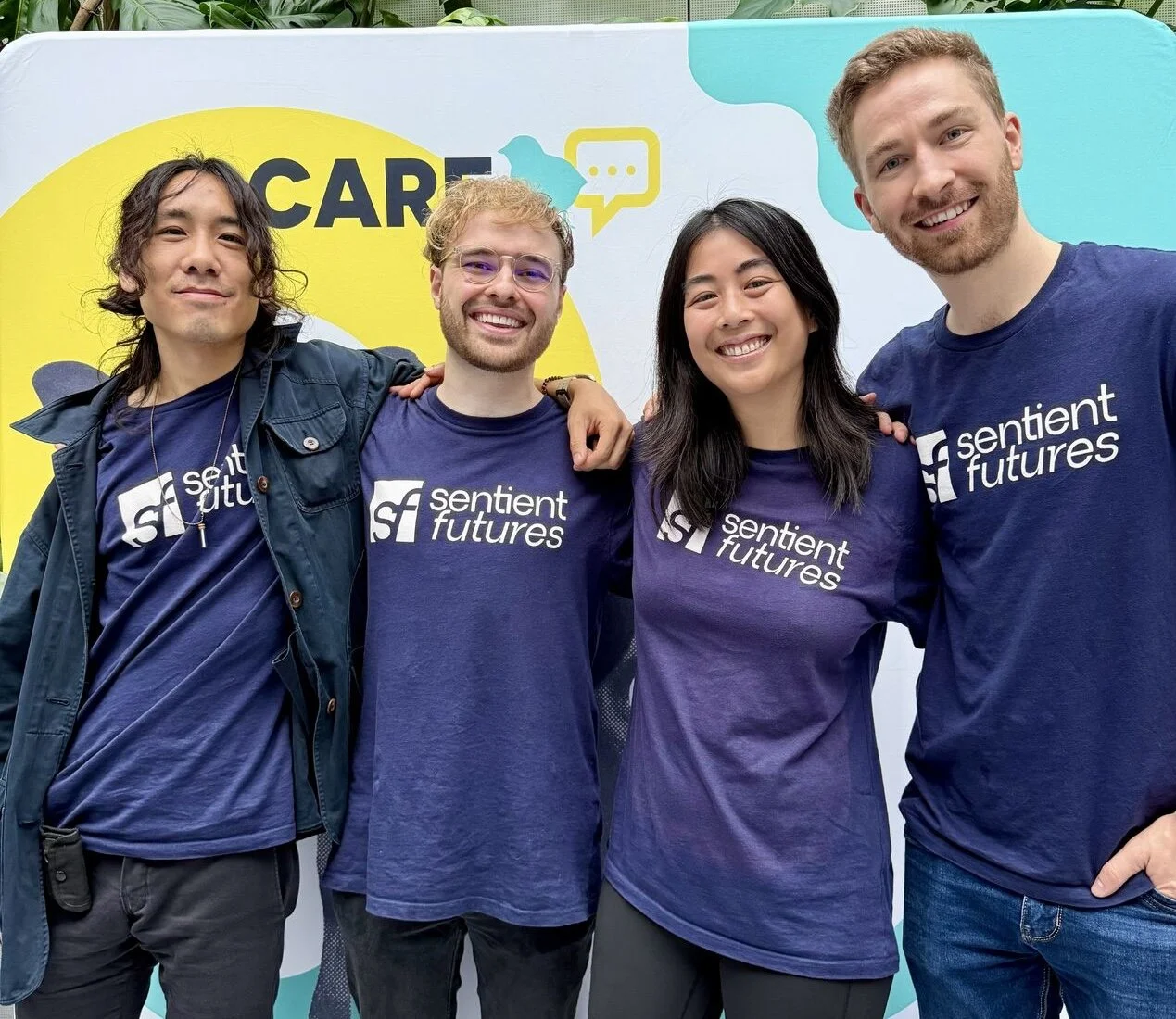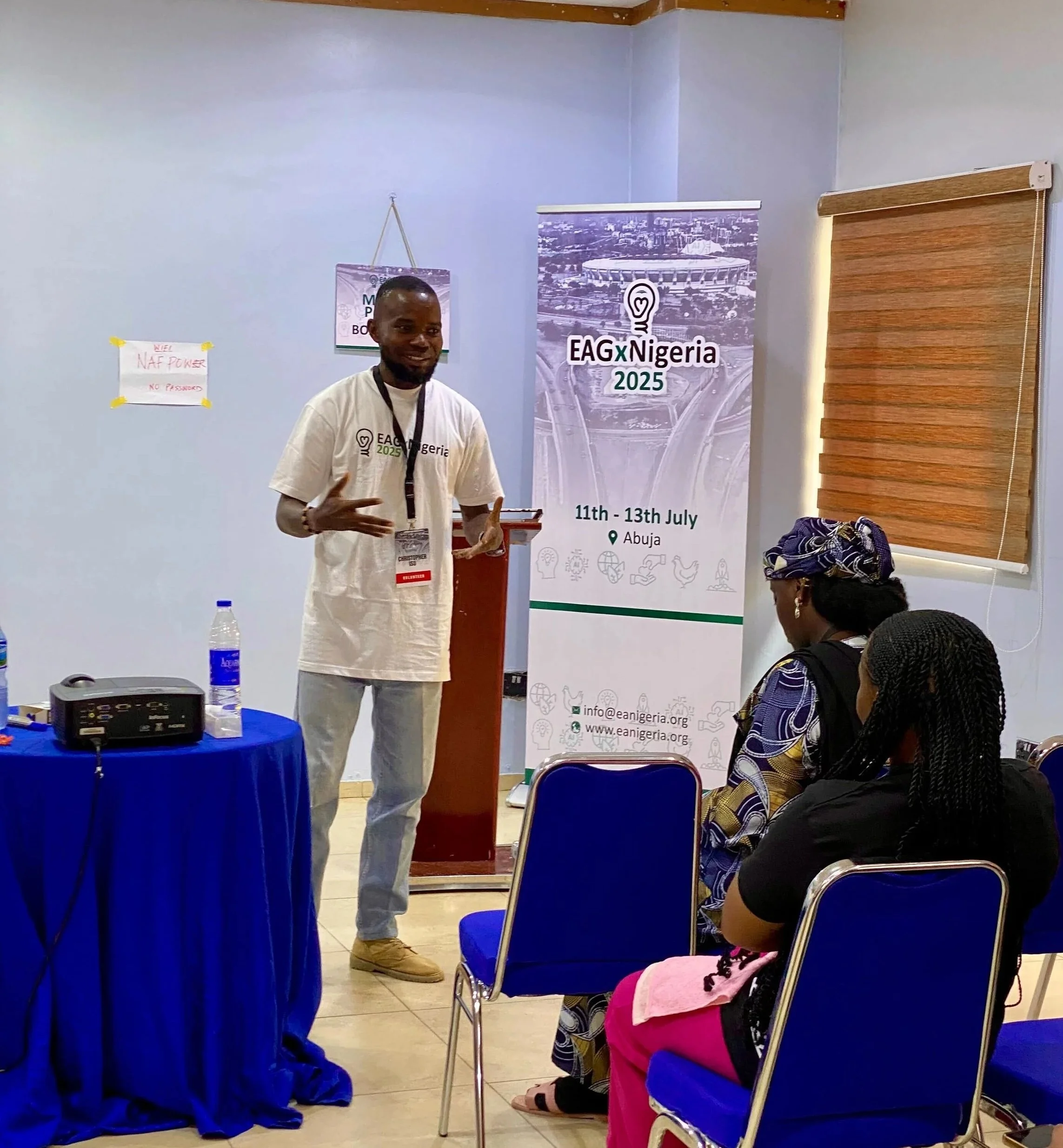How Hive Turns New Ideas into Real Projects and How You Can Too!
Replicable conditions, not one-off luck, are how we grow animal advocacy faster.
TL;DR: Hive is a launchpad. Our focus isn’t on starting projects ourselves. Instead, we build the conditions where high-leverage ideas appear, find the right people, and become real. Our formula focuses on three moves: spark the idea, push it into action, and power it through community. The result is a pipeline of counterfactual projects, plus dozens of roles, partnerships, and coalitions that move our movement forward. Ending factory farming is urgent and solvable, and infrastructure like Hive helps us get there sooner.
How We Got Here and Why Conditions Matter
When people ask what Hive does, I have to resist listing programs first. The deeper truth is this: we design our community for serendipity and follow through with support. That is how curiosity turns into work that matters.
We built Hive to multiply the impact of advocates worldwide. Our Slack community, our Newsletter, and our team exist for one reason: to increase knowledge exchange and help the right people meet at the right time. Good ideas are not enough; they need fuel, focus, and friends.
Serendipity/luck can strike by chance, but it’s structure that helps it turn into something real. At Hive, we focus the community by creating clear channels, curated information, and targeted introductions. These boundaries reduce noise, raise the signal, and help momentum stick.
Hive’s Replicable Formula for New Initiatives
1) Spark the idea
Early ideas are fragile. So we increase the chances they will be actioned upon.
Slack, a focused space for open questions, informed debate, and quick knowledge exchange.
Newsletter, a bi-weekly digest of opportunities, research, and calls to action, so advocates do not lose time hunting for what matters.
My question on Hive Slack, “What consequences will AI development have for animals, good or bad,” sent Constance Li down a two-hour rabbit hole. That curiosity grew into Sentient Futures (formerly AI for Animals), a now-independent organization building field-defining work for future sentient beings.
The Sentient Futures team at CARE 2025
It’s also how one idea, to make public information about animal advocacy more accurate, sparked collaboration among 70+ community members. That energy and collaboration empowered another member to build out the concept into a fully incubated project!
2) Push it into action
Once an idea takes root, we offer practical support and visibility.
We help advocates explore, test, and refine their hypotheses.
We connect them to mentors, funders, conferences, and collaborators.
For unusually promising ideas, we amplify the advocate behind them with strategy, advice, and integration into Hive’s support ecosystem. Often, that means even more personalised recommendations, introductions, and a credible narrative.
Constance was new to the movement and outside key networks. Through Hive, she found a platform, a strategic role, and fiscal sponsorship to reach escape velocity. A different path, similar arc, a health-tech professional came to Hive from outside animal advocacy, met a co-founder, and together they created a nonprofit initiative that fosters innovation and drives the transition toward sustainable, humane food systems by supporting impactful research.
3) Power it through community
Impact needs people. Hive’s year-round, globally diverse community of 4,000+ advocates is a built-in network for early signal and long-term collaboration.
Our connections team makes high-trust introductions.
Our community channels enable coordination across borders and cause areas.
Our movement overview helps us match people to the right ideas at the right moment.
Sentient Futures (formerly AI for Animals) is a case in point: its earliest collaborators came through Slack and coalition calls.
Similarly, a series of connections through Donut meetings and Hive Community Conversations led to the founding of Effective Animal Advocacy groups in Kenya and Namibia, which later also led to the founding (and funding!) of Effective Animal Advocacy Nigeria.
From EAGxNigeria 2025
Case Study: Sentient Futures (formerly AI for Animals)
Sentient Futures is a vivid example of how this system works.
Spark: a question on Hive Slack triggered focused research and a new hypothesis space.
Push: Hive offered a platform, strategic guidance, and fiscal sponsorship. Key conferences and resources flowed through our channels at the right time.
Power: the Hive community provided early collaborators and feedback loops that turned a good idea into a real organization.
Hive doesn’t “start” projects; the combination of curated knowledge exchange, targeted support, and high-trust connections forms conditions for counterfactual projects to be started. Without that bundle, the same outcome would have been less likely or slower. Faster progress, fewer stalls, more impact for animals.
Why Hive, Why Now
Ending factory farming is urgent and solvable. To shorten the timeline, our movement needs more high-leverage projects and stronger connective tissue between them. Hive’s role is to reduce time to traction. When we do, several compounding effects show up.
Speed: more ideas reach a first milestone faster.
Quality: better information reduces false starts and helps teams pivot earlier.
Access: outsiders with a strong fit can step into leadership sooner.
Resilience: community ties make setbacks survivable and successes contagious.
I have felt this in my own work. Building things is lonely, especially at the start. A well-timed introduction, a sharp framing for a funder, an email that says “you are not crazy, keep going,” can change the slope of the curve. Leadership is not just getting there first; it is making sure others can get there at all.
How to Use Hive Today
If you are an advocate with a nascent idea, share a question in Hive Slack, even if it feels half-baked.
Use our newsletter, Hive Highlights, to spot adjacent opportunities.
Browse the Resource Hub to connect the dots.
Ask us for a warm introduction.
If you are a funder or leader, tell us what you are seeking, and we can help you meet the right people earlier.
Call to Reflection
What is the smallest next step that would turn your curiosity into a testable piece of work? Who needs to see it, and what would make their “yes” easier? Where could constraints sharpen your idea rather than stall it?
Bring that question to Hive. Let’s turn it into motion.



